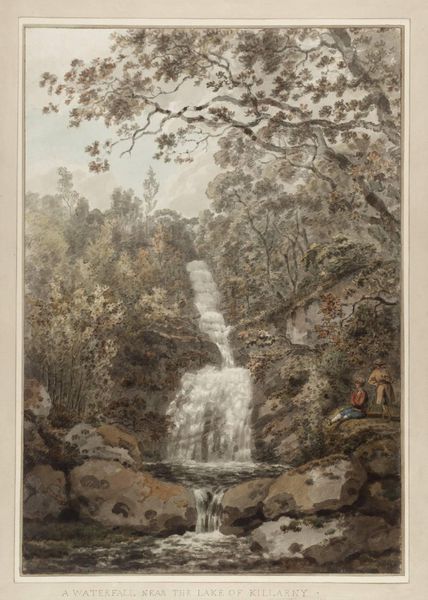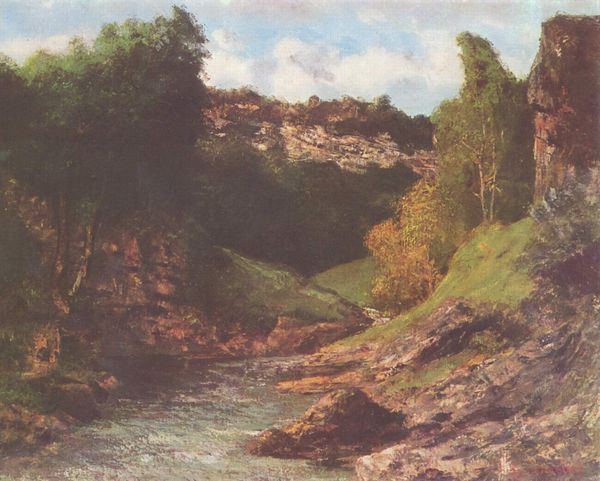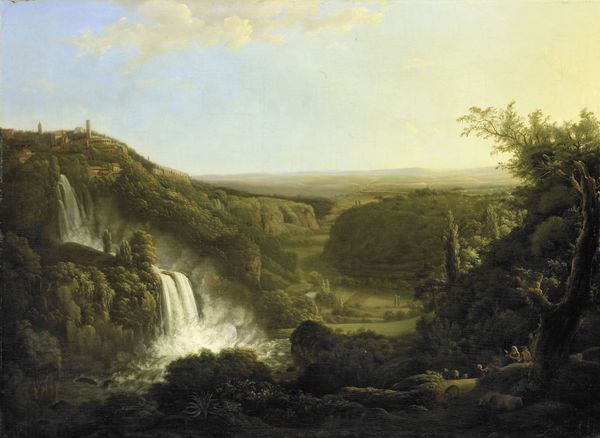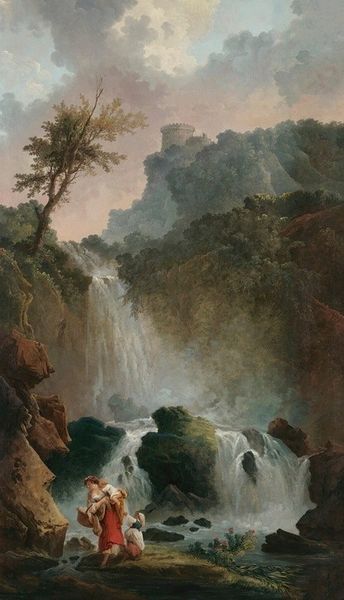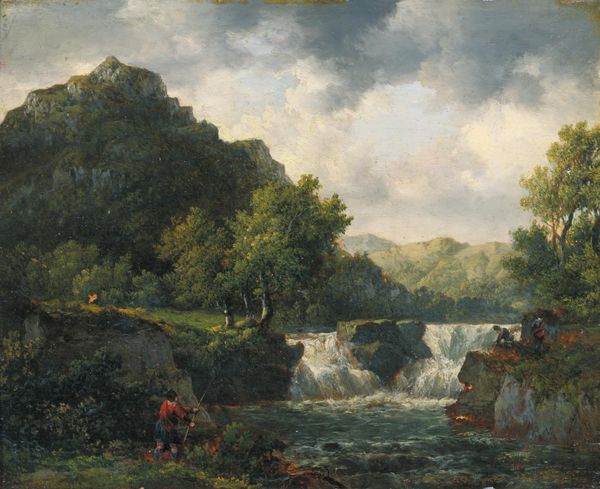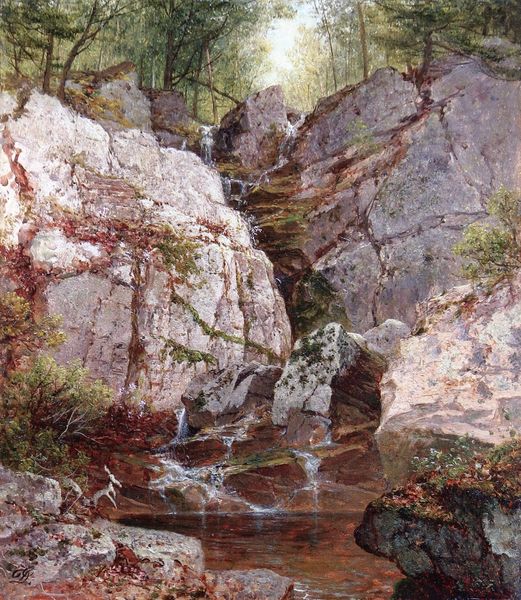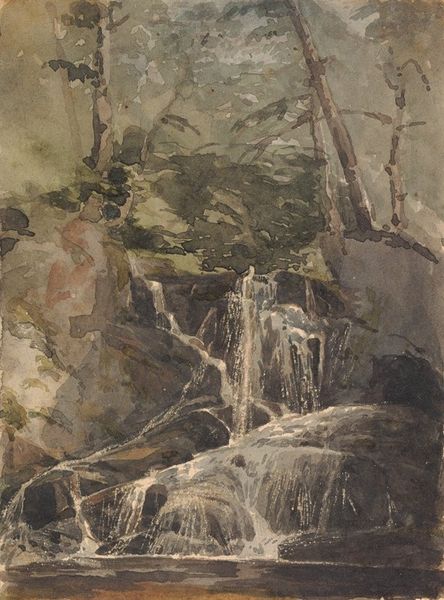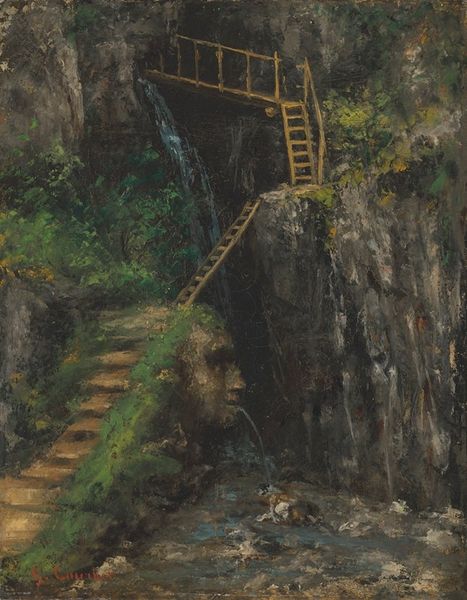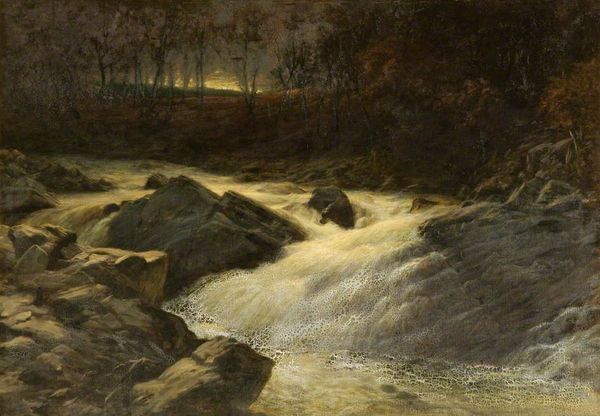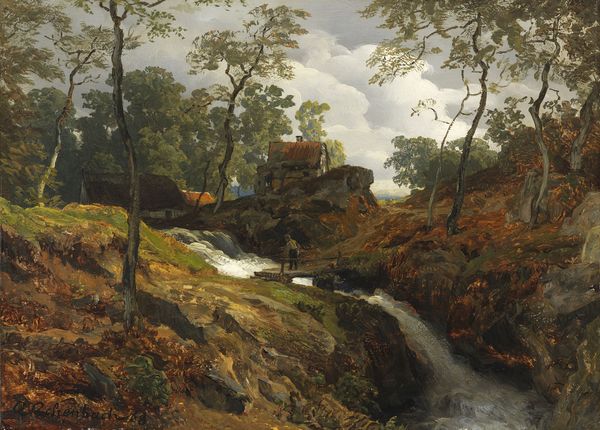
painting, oil-paint
#
painting
#
oil-paint
#
landscape
#
oil painting
#
romanticism
#
history-painting
#
realism
Copyright: Public Domain: Artvee
Editor: So, this is "The Falls Of The Clyde After A Flood" by James Ward, an oil painting. The force of the water is amazing—so turbulent. What kind of symbols and images do you notice here, and how do they build emotional meaning? Curator: This work, to me, speaks volumes about the symbolic power of water itself. Notice how Ward renders it not just as a natural element but almost as an untamable force. Floodwaters carry complex associations - devastation, purification, rebirth. Does the built structure, fighting against the surge, symbolize anything for you? Editor: Perhaps resilience against nature's power? Or even humanity trying to control something uncontrollable? Curator: Precisely! Think of other cultural narratives tied to floods: Noah's Ark, ancient creation myths. Water often signifies both destruction *and* renewal. In Ward's painting, do you see an attempt to reconcile these opposing forces? How does light play into this emotional undercurrent, guiding the eye? Editor: Now that you mention it, the light definitely emphasizes the destructive side. But, yes, the sun highlighting the tower suggests hope amidst the chaos...it becomes symbolic in this historical narrative, hinting at rebirth. I didn't notice that connection earlier! Curator: Spot on! Consider how the symbolic understanding of landscapes, especially powerful natural phenomena, has evolved and been expressed in different periods of art history, from the sublime to something else. Editor: Thinking about how cultural memory is constructed is amazing. I see how much I missed before in James Ward's depiction! Thanks for pointing out these connections!
Comments
No comments
Be the first to comment and join the conversation on the ultimate creative platform.



